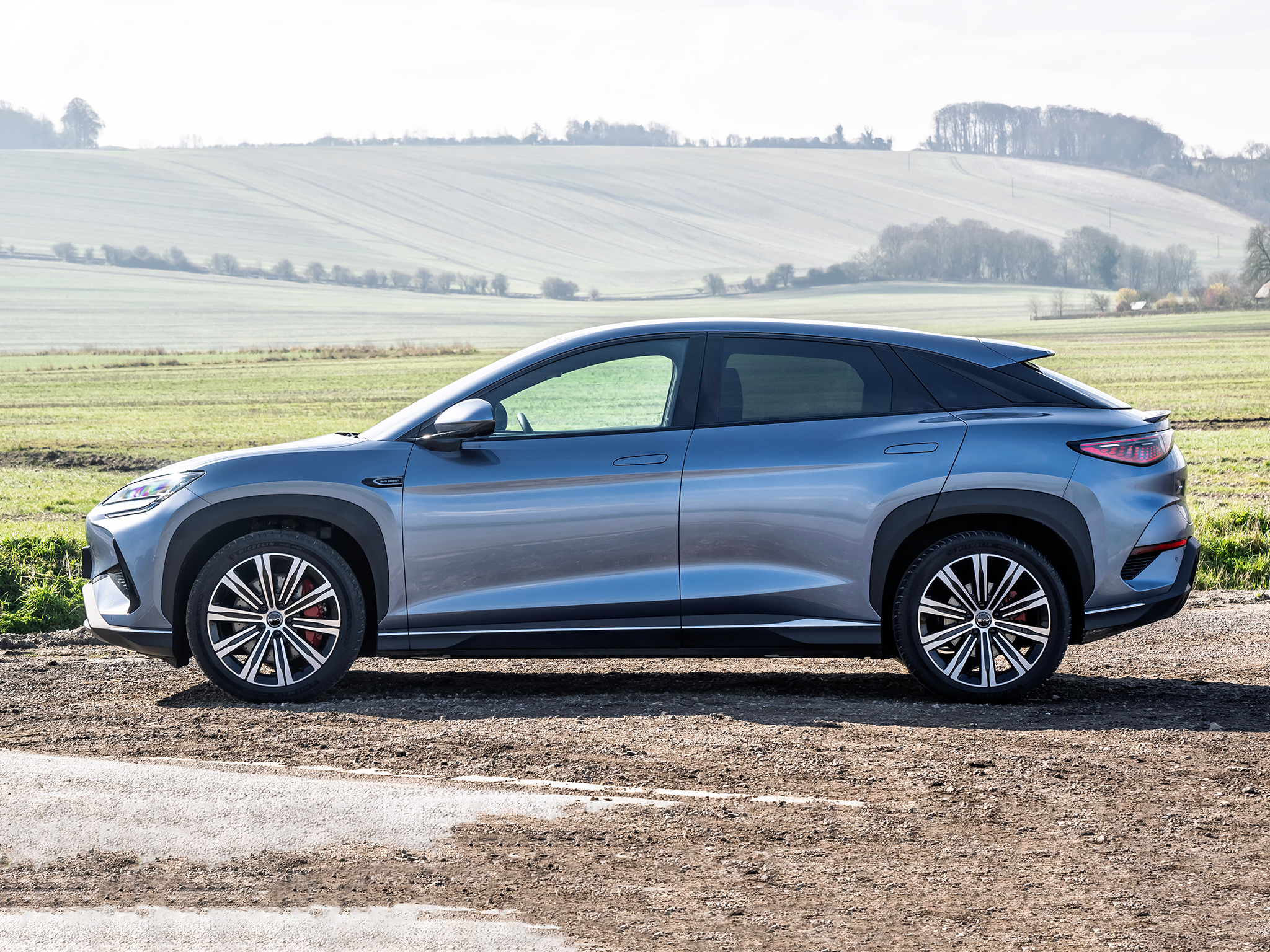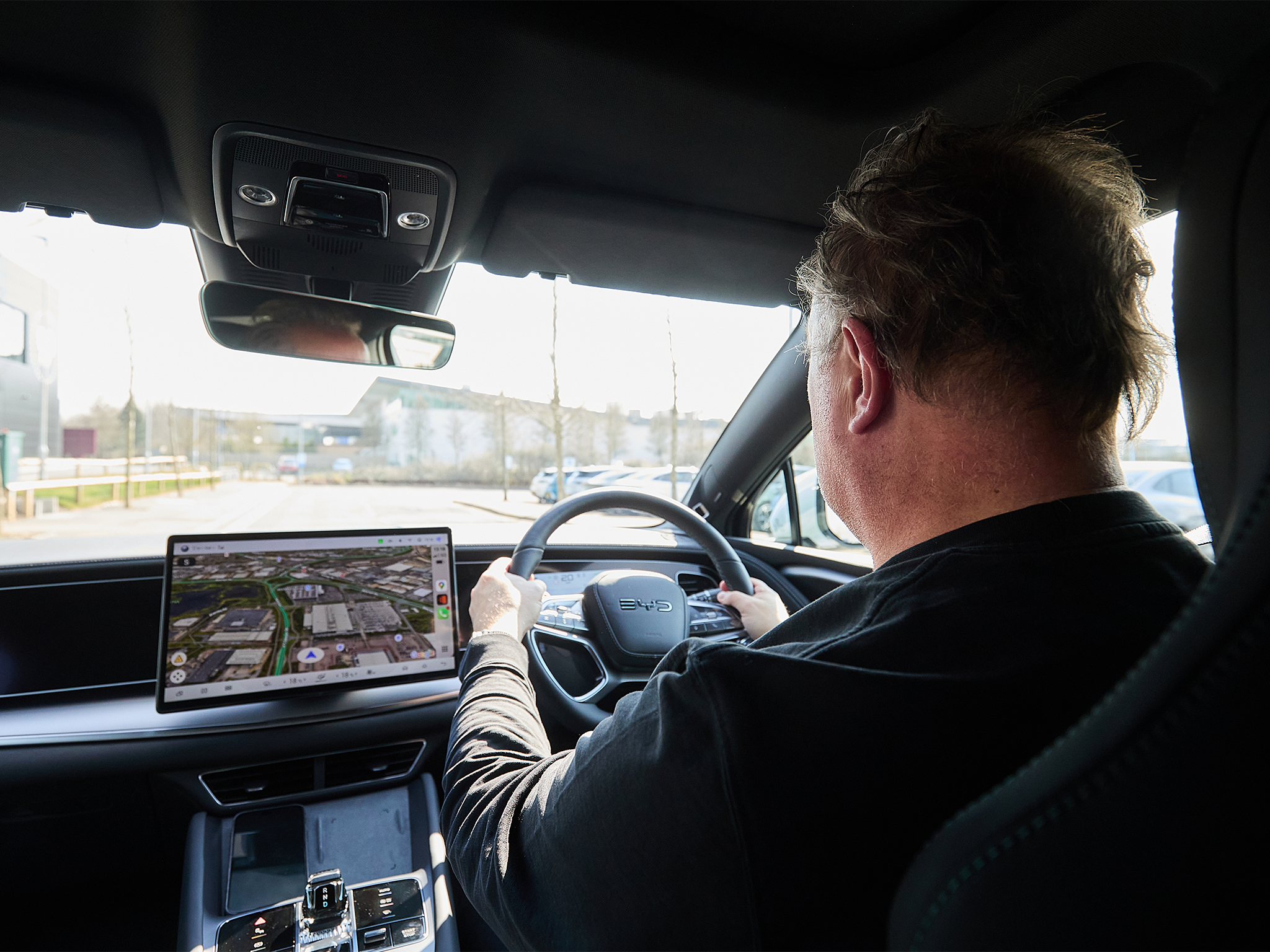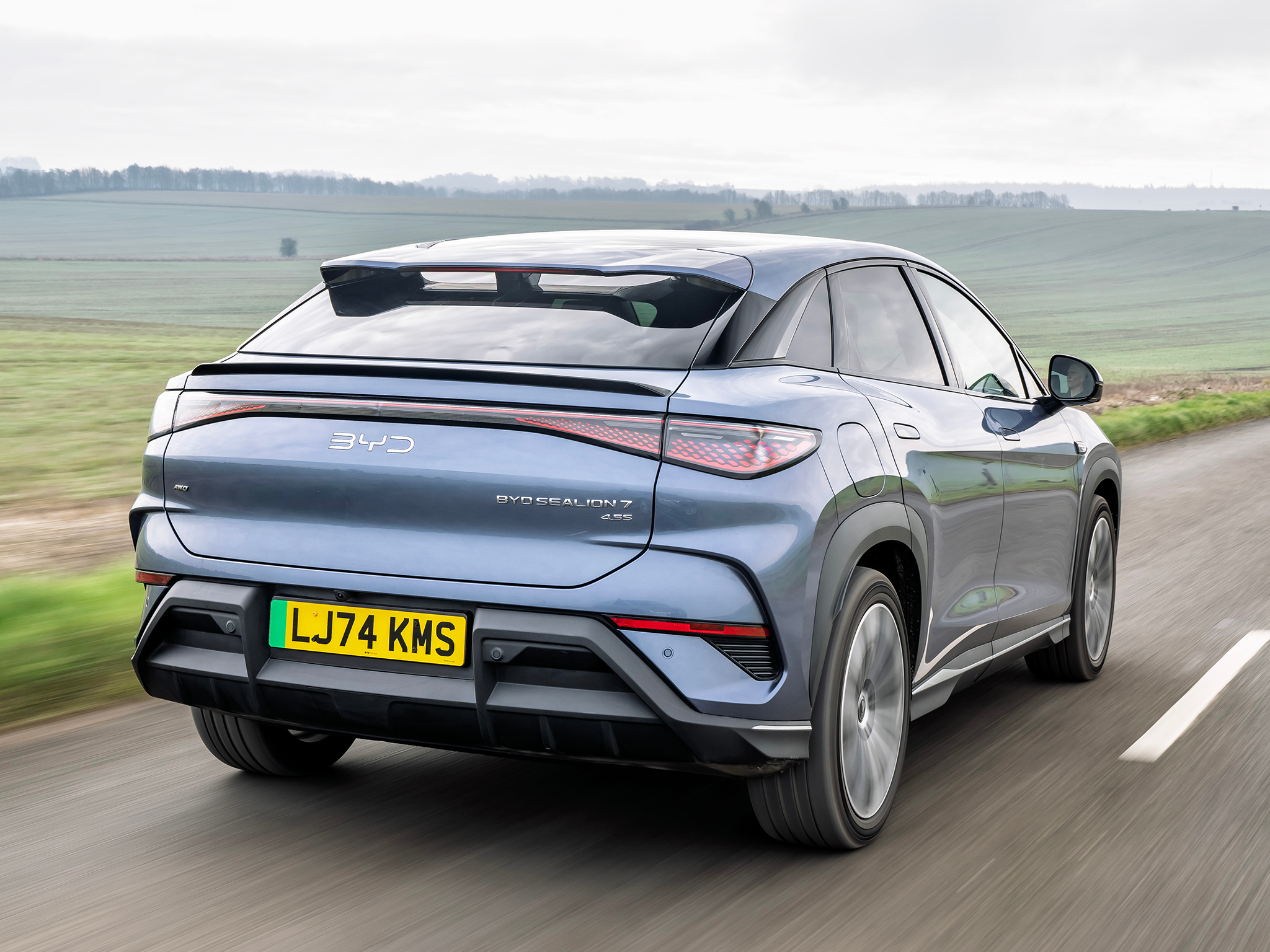Do we really need an all-electric SUV to go from zero to 62mph in 4.5 seconds? BYD certainly thinks so – enough to announce it on the car’s badge on the boot lid.
According to BYD bosses, performance is more important than range for BYD buyers. I disagree. If you had a slider on the glorious 15.6-inch touchscreen that let you choose a slower 0-62mph time in exchange for a 350 mile range, I reckon most people would do precisely that.
So has BYD got it wrong? The brand is clearly positioning itself in the premium sector and the Sealion 7’s showroom appeal lives up to that billing. It’s a smart looking SUV that’s a decent size – at 4,830mm long, it’s a little longer than a Tesla Model Y. Build quality is hugely impressive, too. All the materials are posh inside and the flowing design (this is part of the Ocean Series of car, so there are wave shapes-aplenty) looks really premium.
Then there’s the tech count, which takes the battle to Tesla. We prefer the BYD’s touchscreen to the Tesla’s, thanks to some thoughtful touches. Space is good, but the drive is a bit of a disappointment – wallowy through bends and a bit bumpy around town.
The biggest problems, though, are the fact that it’s both more expensive than the Model Y (more so up against an Xpeng G6 and Changan Deepal S07) and won’t go as far on a single charge, It’s a bold move by BYD, and a bit too bold by my reckoning.
How we tested
We joined BYD’s launch extravaganza in Milton Keynes, so drove the car around lots of roundabouts, but also managed to drive around the city and on some of the country lanes. We also tried the back seats and boot for size, too.
BYD Sealion 7: From £46,990, BYD.com

Independent rating: 6/10
- Pros: Spacious, well made, loaded with easy-to-use tech
- Cons: Too expensive and doesn’t go far enough, not great to drive
- Price range: £46,990 to £58,990
- Battery size: 82,5 & 91.3kWh
- Maximum claimed range: 312 miles
- Miles per kWh: TBC
- Maximum charging rate: 230kW
Battery, range, charging, performance and drive
There are two battery sizes available across three Sealion 7 models, all using BYD’s blade battery tech and the company’s e-Platform 3.0. Comfort and Design cars get the 82.5kWh battery, Excellence gets a 91.3kWh battery.
Both Design and Excellence also get all-wheel drive, so the maximum claimed ranges for all three line up as 300 miles for the two-wheel drive Comfort, 283 for the four-wheel drive Design and 312 for the Excellence, also with four-wheel drive.
Charging speeds aren’t too bad. You get a maximum speed of 150kW for the smaller battery and 230kW for the larger one – but again, not as good as a cheaper Tesla. It does mean that a ten to 80 per cent charge will take just 24 minutes with the larger battery, though.
That 4.5 second 0-62mph time is fun at times, but pretty irrelevant for most buyers. There’s plenty of performance when you’re on the move and want an instant hit of power, but you’re not going to think any of the Sealion 7’s rivals are slow.
What’s more important is how comfortable the Sealion 7 is on the road, and it’s not great news here. It’s an unusual combination of slightly wallowy and firm; it’ll lean through bends and occasionally feel a bit bouncy over undulations, while it can also feel firm and a bumpy over potholes and drain covers. It’s not uncomfortably firm, but will always let you know how bad the road is.
The steering isn’t exactly responsive, either, nor does the handling live up to the sporty pretensions of that 0-62mph time. That said, things are quiet on board, thanks to plenty of sound-deadening and double glazing.
Interior, practicality and boot space
BYD’s blade battery is an integral part of the car’s body, which has big safety advantages. With not much other than storage space (a 58-litre frunk) under the bonnet and a structure designed to deform in a certain way, it pays dividends should you suffer a frontal impact. In its measured tests, BYD says that pedal intrusion into the cabin is considerably less than rivals.
The Sealion 7 is slightly longer than its main rivals, which means excellent space inside. I had no complaints about headroom, even with the lovely full-length panoramic sunroof that’s standard on all models.
The long rear doors open usefully wide for easy access into the huge rear cabin, which is comfortable with a good view out and up. The rear seats even adjust and are heated, too – there’s added cooling for those in the front.
Sadly, the view out of the back window isn’t great, although a good camera system helps when reversing and the mirrors are usefully large. It’s a bit like peering through a letterbox at the back, not helped in bad weather by the lack of a rear wiper – aerodynamics may keep the rear screen clear on the move, but not in stop-start traffic in bad weather.
The powered boot door swings up high to reveal a good 520-litre boot with a nice deep well under the boot floor. There’s that added space in the frunk and inside you’ll find no fewer than 20 cubbies for storage.

Technology, stereo and infotainment
The star of the show on the tech front is the rotating 15.6-inch touchscreen, which swivels via touch or voice control, featuring BYD’s excellent latest operating system and the company’s trademark. Not only is the screen crisp and responsive, but BYD has clearly given thought to what users in the UK want and don’t want when it comes to usability.
I really like the three finger swipes that can instantly adjust the temperature or fan speed without delving into menus. There’s a dock at the bottom of the screen with fast buttons for other important features, as well as more detailed heating and ventilation controls.
There’s Apple CarPlay and Android Auto smartphone connectivity with a cooled, 15-watt wireless smartphone charger, too. A 12-speaker Dynaudio music system takes care of the sounds, while voice control is excellent. It carries on listening after a first instruction for back and forth conversation with the car – which can catch you out if you forget.
In front of the driver is a 10-inch digital display that’s customisable, but always a bit overcrowded. Top-spec Excellence cars get an excellent head-up display. All cars get the option to use your smartphone as your key – just wave it over the driver’s door mirror to open the car – while all the expected driver assistance and safety systems are present and correct.
Prices and running costs
Put simply, the Sealion 7 is surprisingly expensive. BYD seems to think it’s more premium than its rivals and is pricing it accordingly. The entry-level car at £46,990 is £2,000 more than the entry-level Tesla Model Y and £7,000 more than an equivalent Xpeng G6 or Changan Deepal S07. In the case of the Tesla it offers 311 miles of range versus 300 for the BYD.
Go for the Tesla Model Y Long Range Rear-Wheel Drive car to match the BYD Sealion 7 Excellence and the Tesla will go 364 miles for £51,990 – the BYD costs £58,990 and only goes 312 miles. With a giant 91.3kWh battery on board, we’d expect better efficiency from the BYD, especially with the company claiming to be a tech leader with its blade batteries.
BYD is already offering low-rate finance with 1.9 per cent APR on a range of packages. There’s also a six-year warranty, which beats many rivals’ cover.

BYD Sealion 7 rivals
FAQs
How long does it take to charge?
Depending on battery, the Sealion 7 will charge at either 150kW (82.5kWh battery) or 230kW (91.3kWh battery).
How much does it cost – is it worth it?
There’s no escaping the fact that the BYD Sealion 7 is more expensive than its rivals, with the cheapest model costing £46,990.
Does BYD replace batteries for free?
BYD covers batteries for eight years or 125,000 miles, while the warranty on the rest of the car is six years or a rather specific 93,750 miles.
The verdict: BYD Sealion 7
So much for these Chinese brands undercutting rivals – the new BYD Sealion 7 is more expensive than its big rival, the new Tesla Model Y. It also doesn’t go as far on a single charge. So being more expensive and with a smaller range immediately count against the BYD, and then you drive it, which might put you off even more.








